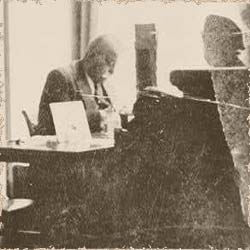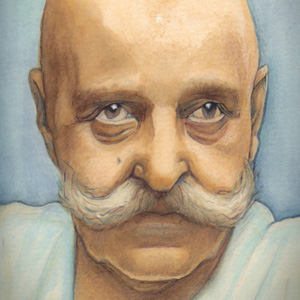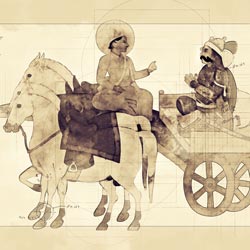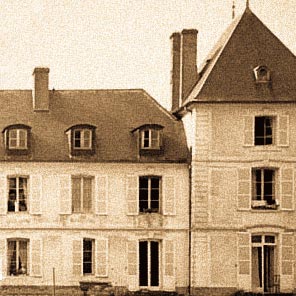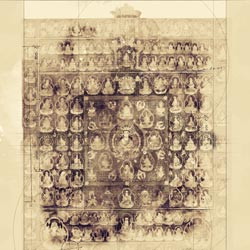
Books on Gurdjieff’s Teaching
Gurdjieff’s career was varied. When he first began teaching in Russia in 1912, he taught through lectures and discussions. A decade later, he shifted his focus to establishing the Chateau Prieuré at the expense of formal lecturing, teaching through the work of developing the Chateau. When the Chateau was disbanded, Gurdjieff returned to formal teaching, this time through writing, although the character of his exposition was very different from the original Russian lectures.
The books listed below cover these different phases. Some convey Gurdjieff’s theories and methods, others his life, and yet others his aims and ambitions. The number of works is considerable. Many are difficult to read. Newcomers to the Fourth Way should consider what they are searching for and focus their reading accordingly. The list below will aid this endeavor.
Books on George Gurdjieff’s Teaching and Methods

In Search of the Miraculous
In Search of the Miraculous tops the list of Gurdjieff books even though it was not authored by Gurdjieff himself, as without it, Gurdjieff’s teaching would have likely disappeared into obscurity. It is thanks to Peter Ouspensky’s account of searching for the miraculous and crossing paths with Gurdjieff in Russia, that Gurdjieff’s most powerful theories and methods survived to this day. The book was published posthumously, after its manuscript had been reviewed and praised by Gurdjieff, somewhat healing the decades-long rift between them. To this day, In Search of the Miraculous is the best-selling doorway into Gurdjieff’s practical, theoretical and philosophical teachings. More about this book here: In Search of the Miraculous

In Search of the Miraculous, by Peter Ouspensky

In Search of the Miraculous, by Peter Ouspensky
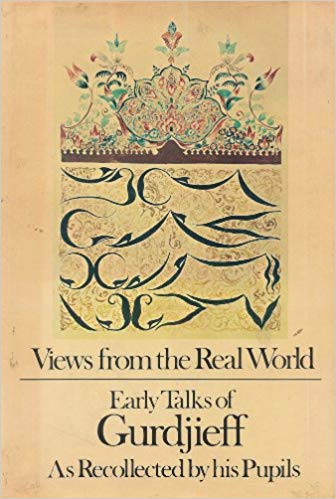
Views from the Real World, by George Gurdjieff
Views from the Real World
A series of essays on Gurdjieff’s ideas from discussions in Moscow, Essentuki, Tiflis, Berlin, London, Paris, New York, and Chicago. The book includes an essay titled Glimpses of Truth, a pupil’s account of a visit to Gurdjieff before the Russian Revolution. This essay was occasionally read in Moscow as an introduction for people meeting Gurdjieff for the first time. Apart from this essay, most of the ideas in this book are covered more thoroughly in Ouspensky’s In Search of the Miraculous. However, as always happens when different people recount similar events, there are unique points of view in this book that can be useful for readers tackling basic ideas.

Views from the Real World, by George Gurdjieff
Beelzebub’s Tales to His Grandson
This voluminous book was undertaken after Gurdjieff disbanded his institute, when he realized he had to reconsider his expectations of how to bring his teaching to the West. Beelzebub’s Tales to His Grandson was to be the first of a threefold series, each aimed at generating a specific effect on its readers. The effect of Beelzebub’s was to “destroy, mercilessly and without any compromise whatever, in the mentation and feelings of the reader, the beliefs and views, by centuries rooted in him, about everything existing in the world.” Accordingly, it was written in an obscure and lengthy style, deliberately difficult to read.
In contrast with the clear and expository character of the two above-mentioned books, Beelzebub’s reverts to the form of myth. Gurdjieff re-writes the history of humankind from an esoteric point of view, explaining how humans degenerated into the condition of sleeping beings, and how, in each epoch, enlightened individuals labored to awaken them. Presumably, all of his theoretical ideas, formerly expressed literally, are slyly coded into this intricate canvas. It is arguable today whether the book has lived up to Gurdjieff’s hopes, although it seems to have served an important purpose in the latter period of his teaching career.
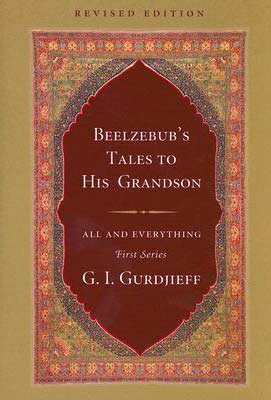
Beelzebub’s Tales to his Grandson, by George Gurdjieff

Beelzebub’s Tales to his Grandson, by George Gurdjieff
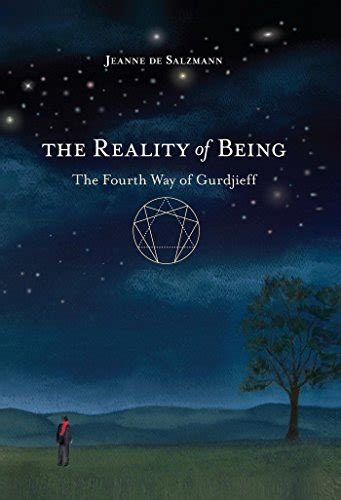
The Reality of Being, by Jeanne de Salzmann
The Reality of Being
Jeanne de Salzmann met Gurdjieff in 1919 and remained his follower till the end of his life in 1949. Gurdjieff entrusted her with the rights of his literary works and dance exercises. During the next forty years, De Salzmann supervised the publication of his books, preserved and taught his movements, and established centers for practicing his teaching in major cities worldwide. Throughout these decades, she took notes of her reflections on the work, which were compiled and edited into a book by her family and followers.

The Reality of Being, by Jeanne de Salzmann

To understand the context of Gurdjieff’s books watch Seeker of Truth:

Books on Gurdjieff’s Life
Biographically speaking, Gurdjieff’s career can be divided in two: the period of search for truth and the period of teaching. The most authentic insight into the first period comes from Gurdjieff’s book, Meetings with Remarkable Men. Hence, it is listed below first. There have been attempts by some of Gurdjieff’s students to trace the sources of his teaching, either through crumbs of information casually given by him, or through discerning the possible origins of his ideas, or through discussions with his relatives. The most noteworthy attempt is listed below.
As for the second period of teaching, Gurdjieff left a strong impact on many people who eventually compiled their impressions and experiences into books, often in the latter part of in their lives, after Gurdjieff’s death. Most of these focus on living and working with him, rather than the knowledge he taught. Noteworthy accounts are listed below.
Books on George Gurdjieff’s Phase of Search

Meetings with Remarkable Men, by George Gurdjieff
Meetings with Remarkable Men
This book is presumably autobiographical. It spans the story of Gurdjieff’s life before he started teaching, dedicating each of its ten chapters to a person who influenced Gurdjieff in his formative years. It is certain Gurdjieff wrote this book. It is questionable whether events happened the way he wrote them. John Bennett claims some of the ‘influential’ people in this book to be metaphorical and pseudonymical, intended to convey various principles behind the search of truth. It is here, in Meetings with Remarkable Men, that we learn of the elusive Sarmoung Brotherhood, the finding of which concludes Gurdjieff long search for truth. Nowhere else, however, does Gurdjieff mention ‘Sarmoung’, nor do we find it in any other source of literature. That said, it is reasonable to assume that many of the details behind Gurdjieff’s descriptions of his childhood are true, and so through this book the reader gains a useful picture of the old-world environment in which he grew up.

Meetings with Remarkable Men, by George Gurdjieff

Gurdjieff – Making a New World
John G. Bennett served as a British intelligence officer stationed in the regions of Central Asia in which Gurdjieff had grown up and gathered knowledge. After Gurdjieff died, Bennett undertook the task of piecing together the clues to his sources. He traveled to visit many of the places mentioned in Gurdjieff’s books as depositories of ancient knowledge. Gurdjieff – Making a New World presents a remarkably methodical result. Bennett also cites experiences from life in the Chateau Prieuré that cannot be read elsewhere. However, the book is written on the assumption that its reader is already familiar with Meetings with Remarkable Men, Beelzebub’s Tales to His Grandson, and In Search of the Miraculous, so this book had best be read after those mentioned above.
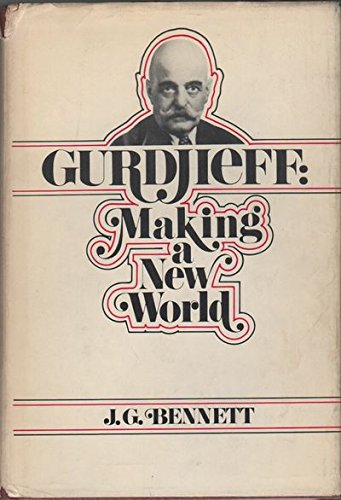
Gurdjieff – Making a New World, by John Bennett

Gurdjieff – Making a New World, by John Bennett

Life is Real Only Then, When I Am, by George Gurdjieff
Life is Real Only Then, When I Am
In this book, Gurdjieff uncharacteristically shares a pivotal chapter in his personal development. In 1902, while convalescing after being hit by a stray bullet, Gurdjieff breaks into a soliloquy of self-examination that explores his attempts at applying what he had learned so far. He is deeply disappointed. Immersed in self-criticism, he finds a breakthrough, which (we are led to understand) enables him to bridge this impasse and achieve a new and permanent inner change. Life is Real Only Then, When I Am was published prematurely. Its final chapter titled The Inner and Outer World of Man was left incomplete.

Life is Real Only Then, When I Am, by George Gurdjieff
Books on Gurdjieff’s Phase of Teaching

Our Life With Mr Gurdjieff
Olga and Thomas de Hartmann met Gurdjieff in Russia in 1916. They became two of his most dedicated students and followed him through the turbulent period of the Russian Revolution till settling down in France. Their memoir Our Life With Mr. Gurdjieff opens a unique window into many important episodes of Gurdjieff’s teaching career, beginning with the remarkable journey through the Caucasus during the Civil War, establishing the Institute for the Harmonious Development of Man for the first time, its various reiterations, and its final resting place in the Chateau Prieuré. This book dwells on Gurdjieff’s life while placing his formal teaching in the background. It is a perfect contrast and compliment to Ouspensky’s In Search of the Miraculous, which does the opposite.
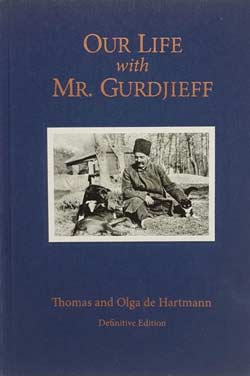
Our Life With Mr. Gurdjieff, by Olga and Thomas De Hartmann

Our Life With Mr. Gurdjieff, by Olga and Thomas De Hartmann
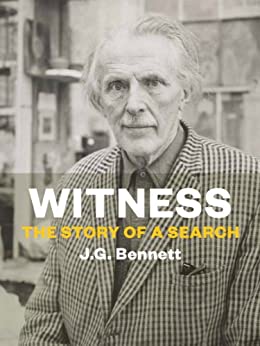
Witness, by John Bennett
Witness
Witness is not exclusively about Gurdjieff. John Bennett forwards it by claiming that “An essential part of man’s duty upon earth is to bear witness to the truth as it has been revealed to him”. The book is Bennett’s attempt at fulfilling this duty. Since Gurdjieff played a key role in Bennett’s search, a few chapters are dedicated to Gurdjieff: Gurdjieff and Ouspensky, With Gurdjieff at Fontainebleau, Mr. and Madame Ouspensky, The Return to Gurdjieff, and Gurdjieff s Last Days. In each of these, Bennett recounts events and conversations of interest to the reader eager to learn more about George Gurdjieff, his teaching, and the circumstances in which he taught.

Witness, by John Bennett
Teachings of Gurdjieff: A Pupil’s Journal
Charles Nott met George Gurdjieff in 1924, during the latter’s first visit to America. Nott was captivated by the performance of the Gurdjieff movements, and his subsequent interactions with Gurdjieff and his followers convinced him to become a pupil. The book Teachings of Gurdjieff: A Pupil’s Journal documents Nott’s search for truth and its culmination in finding Gurdjieff. It includes insights into Gurdjieff’s visit to America, scenes from daily life at the Chateau Prieuré, and Gurdjieff’s near-fatal car accident that resulted in disbanding the Intitute. Nott authored a follow-up book titled Further Teachings of Gurdjieff: Journey Through This World sharing more of his impressions.
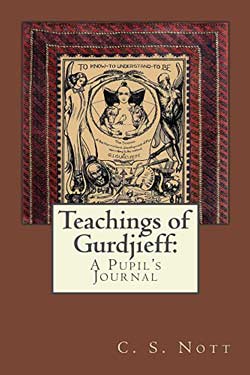
Teachings of Gurdjieff: A Pupil’s Journal, by Charles Nott

Teachings of Gurdjieff: A Pupil’s Journal, by Charles Nott
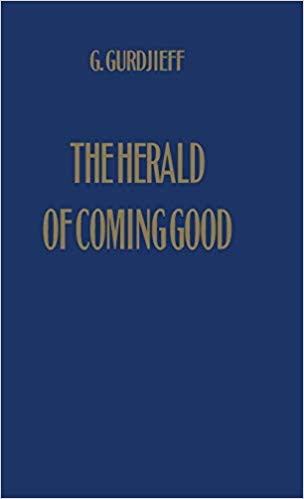
Herald of the Coming Good, by George Gurdjieff
Herald of the Coming Good
Herald of the Coming Good is only listed here as it was written by Gurdjieff. Even by the author’s opinion, it was prematurely published. The book is Gurdjieff’s first and relatively short narrative that reflects his initial and somewhat naive enthusiasm. It lends insight into the period of search, as well as explains why Gurdjieff chose Russia as the destination in which to start his teaching. Gurdjieff subsequently regretted having published this book and discouraged his followers from reading it.

Herald of the Coming Good, by George Gurdjieff


Ouspensky Books
Peter Ouspensky was already an established author when he met Gurdjieff in 1915. Gurdjieff invited him to his introductory lectures in hope of using his literary help to disseminate his teaching in Russia. Ouspensky took note of Gurdjieff’s early lectures and eventually published what would become the most well-known presentation of Gurdjieff’s teaching: In Search of the Miraculous (listed above).
Ouspensky parted ways from Gurdjieff in the 1920’s for reasons he explains in In Search of the Miraculous. Nevertheless, he spent the remaining years of his life teaching Gurdjieff’s ideas, a fact that drew considerable criticism from those loyal to Gurdjieff. One way in which Ouspensky compensated for this contradiction was by stating forthright that the ideas he taught did not belong to him. Consequently, his teaching, and the books that document his teaching, are characterized by a precedence of the message over the messenger.
Ouspensky Books on the Fourth Way

The Psychology of Man’s Possible Evolution
This book is a compilation of five lectures that used to be read before an audience by Ouspensky’s students. Ouspensky would take notes during these readings and revise the material, over a period of six years, resulting in the most concise exposition of the core psychological ideas of the Fourth Way. Ouspensky published the first edition of The Psychology of Man’s Possible Evolution on his private printing press. The book subsequently appeared in several more editions, some of which append a meeting transcript to the five lectures.
It is worth noting that The Psychology of Man’s Possible Evolution and In Search of the Miraculous are the only Fourth Way books edited by Ouspensky himself. The rest of the titles authored by him (listed below) are transcripts of his meetings, compiled and edited by his students, and published after his death.
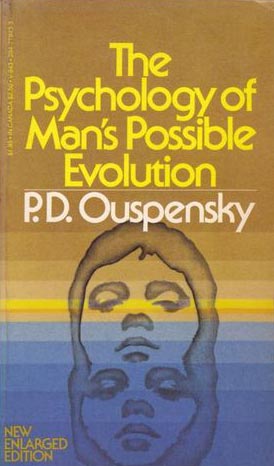
The Psychology of Man’s Possible Evolution, by Peter Ouspensky

The Psychology of Man’s Possible Evolution, by Peter Ouspensky

The Fourth Way, by Peter Ouspensky
The Fourth Way
A well indexed and accessible exposition of the Fourth Way, taken from notes of those attending Ouspensky’s lectures. This book elaborates in great detail on what The Psychology of Man’s Possible Evolution outlines. Each chapter is dedicated to a series of related Fourth Way topics, beginning with an introductory exposition by Ouspensky on that topic, and continuing with questions and answers from his meetings.
The latter part of this book includes Ouspensky’s discussions about eternal recurrence. This is his exploration of eastern idea of reincarnation and his attempt to reconcile it with the Fourth Way.

The Fourth Way, by Peter Ouspensky
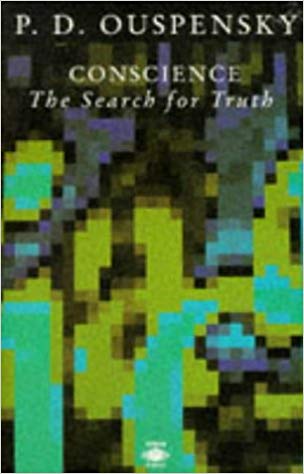
Conscience – The Search for Truth, by Peter Ouspensky
A Further Record
Another well-indexed and accessible exposition of the Fourth Way, taken from notes of Ouspensky’s lectures. A lot of the material in this book is already featured in The Fourth Way. Some discussions are exclusively featured here.
Conscience – The Search for Truth
This compilation of essays, also based on Ouspensky’s talks and answers to questions, is centered around the development of conscience. The contrast between morality and conscience was an idea to which Gurdjieff periodically returned.

A Further Record, by Peter Ouspensky

Conscience – The Search for Truth, by Peter Ouspensky

A Further Record, by Peter Ouspensky
Ouspensky Books before Having Met Gurdjieff
Even before meeting Gurdjieff in 1915, Peter Ouspensky had already established himself as a prominent thinker and lecturer on the occult in Moscow and St Petersburg. He authored a book titled Tertium Organum that would later become a best seller. However, his exposure to Gurdjieff’s ideas would so alter his understanding, that a clear line would be drawn between the books he authored before and after having this encounter. Below are two books from the period preceding his studying under Gurdjieff
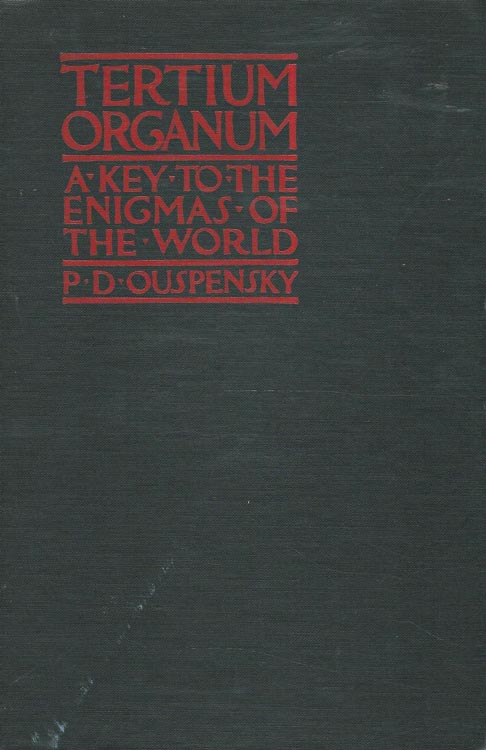
Tertium Organum, by Peter Ouspensky
Tertium Organum
A direct experience of Ouspensky’s mind, without the Gurdjieffian imprint. Ouspensky comments on his own book, “I have called the system of higher logic Tertium Organum because for us it is the third law of thought after Aristotle and Bacon. The first was Organon, the second Novum Organum. But the third existed before the first.” In this book, Ouspensky postulates the nature of the real world beyond the ordinary senses, discusses the essential evolution in human consciousness and emotion which must come before the higher world can be perceived and understood, and presents the ‘new logic’ or terminology which is essential for the description of the new reality.

Tertium Organum, by Peter Ouspensky
A New Model of the Universe
Ouspensky outlined and began this book before meeting George Gurdjieff, and completed it after the two had separated. Despite the years with Gurdjieff which intervened between writing and publication, Ouspensky tried in his revision to keep separate what he knew before he encountered the system and what he learned while within it. The book draws from his travels to the near and far east, and offers a psychological method for approaching the wisdom of ancient cultures (Tarot, Gothic, Buddhism, Esoteric Christianity, etc.).
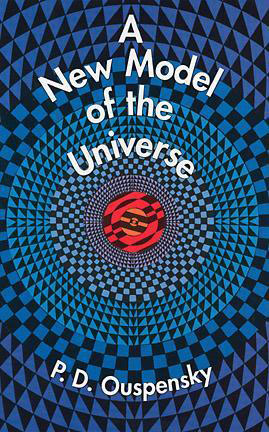
A New Model of the Universe, by Peter Ouspensky

A New Model of the Universe, by Peter Ouspensky


Other Notable Fourth Way Books
Gurdjieff’s ideas, profound and radical as they were, naturally seeded many books and influenced many writers. Several were researched to compile the documentary Seeker of Truth. Among these, quoted in the documentary, are Anna Butkovsky-Hewitt’s With Gurdjieff in St. Petersburg and Paris; René Zuber’s Who are you Monseieur Gurdjieff?; and Elizabeth Bennett’s My Life: J.G. Bennett and G.I. Gurdjieff: A Memoir. James Moore’s Gurdjieff: A Biography was consulted for dates and chronology of events.
Ouspensky’s followers also left a significant literary legacy. His student Rodney Collin published The Theory of Celestial Influence, The Theory of Conscious Harmony , and The Theory of Eternal Life. Maurice Nicoll, another student of Ouspensky’s who also studied under Gurdjieff in the Chateau Prieuré, published five volumes of Commentaries on the Teaching of Gurdjieff and Ouspensky. These are mentioned in passing as books of value to the Fourth Way practitioner. They cannot be categorized as books on George Gurdjieff. Rather, they are testaments of their author’s attempts to continue his legacy.
.
Frequently Asked Questions
What order should I read Gurdjieff’s books?
1. Introductory / Interpretive Works by His Students:
a.) In Search of the Miraculous by P.D. Ouspensky – clearest, most systematic introduction to Gurdjieff’s ideas.
b.) Teachings of Gurdjieff: A Pupil’s Journal by Charles Stanley Nott
c.) Gurdjieff: Making a New World by John G. Bennett
d.) The Reality of Being by Jeanne de Salzmann
2. Autobiographical Works by Gurdjieff:
a.) Meetings with Remarkable Men – lighter and more narrative; describes his travels and the “Seekers of Truth.”
b.) Life is Real Only Then, When ‘I Am’ – incomplete but deeply personal reflections.
3. Beelzebub’s Tales to His Grandson – the heart of his teaching, but deliberately difficult.
Start with Ouspensky, then “Meetings,” and return to Beelzebub’s Tales once you’re steeped in the ideas.
What is ‘Beelzebub’s Tales to His Grandson’ about?
Its purposes:
1. To “destroy, mercilessly” our illusions and mechanical thinking.
2. To present deep psychological and cosmic truths veiled in symbolic language.
3. To push the reader toward effortful reading as a spiritual exercise.
It’s not meant to be understood easily. Gurdjieff wanted readers to struggle with it, re-read it, and experience “conscious labor and intentional suffering.”
Are there good introductory books on Gurdjieff’s system?
– In Search of the Miraculous by P.D. Ouspensky – The most complete, accessible summary of Gurdjieff’s system.
– Teachings of Gurdjieff: A Pupil’s Journal by Charles Stanley Nott – Great for seeing how ideas were practiced day-to-day.
– The Reality of Being by Jeanne de Salzmann – Focuses on self-remembering and inner experience.
– Gurdjieff: Making a New World by John Bennett – Interprets Gurdjieff’s role and methods in modern terms.
If you’re new, these books are far more readable than Gurdjieff’s own cryptic writings.
Who were Gurdjieff’s main students who wrote books?
P.D. Ouspensky –
– In Search of the Miraculous
– The Fourth Way (published posthumously)
Jeanne de Salzmann –
– The Reality of Being (compiled from her notes and teachings)
John G. Bennett –
– Witness
– Gurdjieff: Making a New World
Charles Stanley Nott –
– Teachings of Gurdjieff: A Pupil’s Journal
Thomas and Olga de Hartmann –
– Our Life with Mr. Gurdjieff
Rene Zuber –
– Who Are You, Monsieur Gurdjieff?
Each offers a unique flavor — some more philosophical, others more anecdotal or experiential.

Continue Reading:
